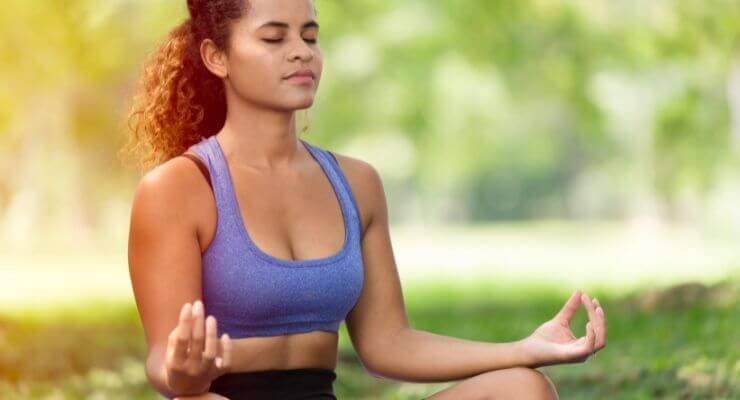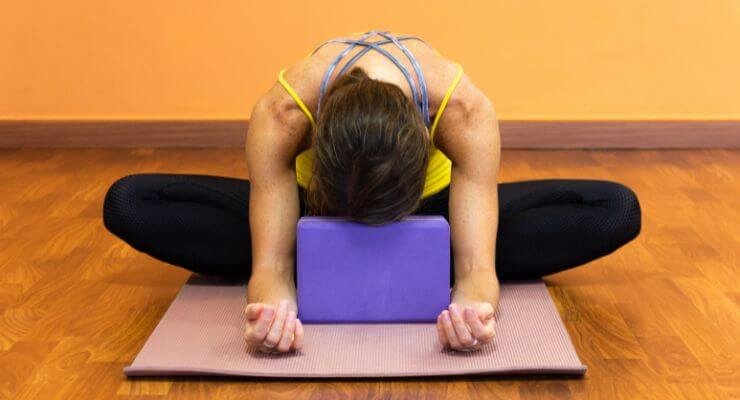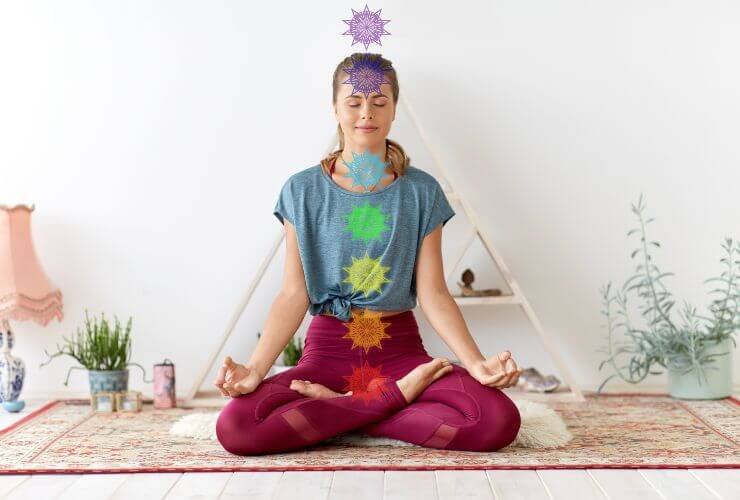Yoga, an ancient practice rooted in over 5000 years of Indian tradition, has evolved into a globally embraced method for enhancing physical and mental well-being.
In a world where stress and anxiety are commonplace, yoga offers a sanctuary of peace and a tool for maintaining mental health.
This article delves into the profound impact of yoga on mental health, specifically focusing on its efficacy in stress relief and anxiety reduction.
Whether you’re a seasoned practitioner or new to the world of yoga, understanding its role in mental health can be a game-changer in your wellness journey.
Historical and Cultural Background of Yoga
Yoga’s journey began over 5000 years ago in India, rooted in ancient philosophical and spiritual traditions. Initially, its primary focus was spiritual growth and understanding the mind-body connection. The word ‘yoga’ itself, derived from Sanskrit, means to join or unite, symbolizing the union of body and consciousness.
Throughout history, yoga has evolved, embracing various styles and interpretations. Its introduction to the Western world in the late 19th and early 20th centuries marked a significant shift, transforming it into a popular physical exercise and wellness practice. However, at its core, yoga remains a holistic discipline, integrating physical postures (asanas), breathing techniques (pranayama), and meditation (dhyana), all aimed at promoting inner peace and mental well-being.
Understanding Stress and Anxiety
In the fast-paced modern world, stress and anxiety have become increasingly prevalent, often leading to a range of mental health issues. Stress, a response to any demand or challenge, can be beneficial in small doses, providing motivation and improving performance. However, chronic stress can lead to detrimental effects on both physical and mental health.
Anxiety, on the other hand, is a reaction to stress. It’s a feeling of fear or apprehension about what’s to come. While occasional anxiety is a normal part of life, persistent and overwhelming anxiety can interfere with daily activities, signaling an anxiety disorder.
Both stress and anxiety can manifest in various forms, affecting mood, productivity, and overall quality of life. This is where yoga, with its multifaceted approach, steps in as a powerful tool to mitigate these mental health challenges.
The Science Behind Yoga and Mental Health
The practice of yoga goes beyond physical exercises; it’s a synergy of body, mind, and breath. Scientific research has begun to unveil how yoga positively affects mental health. Key elements like controlled breathing, mindfulness, and physical postures work together to reduce stress and anxiety levels.
Controlled Breathing (Pranayama)
Breathing techniques in yoga, known as pranayama, play a crucial role in influencing the body’s response to stress. By slowing down and deepening the breath, these techniques stimulate the parasympathetic nervous system, often referred to as the “rest and digest” system. This induces a state of calmness and relaxation, countering the body’s stress response.
Mindfulness and Meditation (Dhyana)
Yoga encourages mindfulness and meditation, focusing on the present moment and fostering a sense of peace. Studies have shown that regular meditation can alter the brain’s neural pathways, making you more resilient to stress and reducing the tendency to overthink, a common symptom of anxiety.
Physical Postures (Asanas)
The asanas, or physical postures, in yoga are not just about flexibility or strength. They are designed to release tension and improve circulation, which can be disrupted by prolonged stress. Regular practice of asanas helps in balancing the body’s hormones, contributing to an overall sense of well-being.
Yoga Techniques for Stress Relief
Yoga offers a plethora of techniques that can significantly alleviate stress. Here, we explore some key poses and practices that are particularly effective in managing and reducing stress levels.
1. Child’s Pose (Balasana)
A simple yet profound pose, Child’s Pose helps in calming the mind and relieving tension in the body. By allowing the forehead to rest on the ground, this pose offers a sense of grounding and stability, soothing the nervous system.
2. Cat-Cow Stretch (Marjaryasana-Bitilasana)
This gentle flow between two poses helps in releasing tension in the spine and neck, areas where stress often accumulates. The synchronized breathing also helps in calming the mind and improving focus.
3. Legs-Up-The-Wall Pose (Viparita Karani)
An excellent pose for relaxing the nervous system, this asana involves lying on the back with legs extended upwards along a wall. It’s particularly beneficial for those who spend long hours on their feet, as it aids in circulation and provides a gentle stretch.
4. Corpse Pose (Savasana)
Often practiced at the end of a yoga session, Savasana is crucial for integrating the benefits of the practice. It allows the body to deeply relax and the mind to quieten, facilitating a state of restful awareness.
5. Breathing Exercises (Pranayama)
Practices like deep abdominal breathing, alternate nostril breathing (Nadi Shodhana), and the cooling breath (Sitali) are powerful tools in reducing stress levels. These breathing techniques help in calming the mind, improving oxygen supply, and balancing the energy in the body.
Practicing these yoga techniques regularly can significantly diminish stress levels and enhance overall mental well-being.
Yoga Techniques for Anxiety Reduction
Yoga can be a powerful ally in managing and reducing anxiety. Certain practices are particularly effective in addressing the physiological and psychological aspects of anxiety. Here, we explore some of these techniques.
1. Tree Pose (Vrikshasana)
This balancing pose requires focus and concentration, diverting the mind from anxious thoughts. Tree Pose also helps in building confidence and a sense of groundedness, which can be particularly beneficial for those experiencing anxiety.
2. Warrior II (Virabhadrasana II)
This strong stance is not only empowering but also helps in releasing built-up tension. It encourages deep breathing and mental focus, which are key in managing anxiety symptoms.
3. Seated Forward Bend (Paschimottanasana)
This pose helps in calming the brain and relieving stress and mild depression. The forward bend creates a soothing effect on the nervous system, fostering a sense of peace and tranquility.
4. Bridge Pose (Setu Bandhasana)
Bridge Pose is excellent for opening up the chest and improving respiration, which can often be compromised during anxiety attacks. It also helps in reducing fatigue, which can be a byproduct of chronic anxiety.
5. Guided Meditation and Relaxation Techniques
Incorporating meditation and relaxation practices such as Yoga Nidra can be immensely beneficial in managing anxiety. These techniques promote mental clarity, reduce rumination, and improve emotional regulation.
6. Mindfulness Practices
Integrating mindfulness into yoga practice, by focusing intently on movements and breath, can further aid in reducing anxiety. This approach helps in staying present and grounded, preventing the mind from wandering into anxious thoughts.
Regular practice of these techniques can not only provide immediate relief from anxiety symptoms but also contribute to long-term mental resilience.
Integrating Yoga into Daily Life
Incorporating yoga into your daily routine can transform it from a mere exercise to a powerful tool for enhancing mental health. Here are some practical tips to seamlessly integrate yoga into your everyday life:
1. Set Realistic Goals
Start with manageable goals, like a 10-minute session each day, and gradually increase the duration as you become more comfortable. Consistency is key, rather than the length of each session.
2. Create a Dedicated Space
Designate a specific area in your home for yoga. This doesn’t need to be a large space, just a quiet corner where you won’t be disturbed. Having a dedicated space can motivate you to practice regularly.
3. Incorporate Yoga into Your Morning Routine
Beginning your day with yoga can set a positive tone for the rest of the day. Even simple stretches or a few minutes of meditation can have a significant impact on your mood and energy levels.
4. Use Technology Wisely
Leverage technology by following online yoga classes or apps. This can provide guidance and structure, especially if you’re new to the practice or have a busy schedule.
5. Practice Mindful Breathing
You don’t always need a mat to practice yoga. Incorporating mindful breathing exercises during your day, like deep abdominal breathing or Nadi Shodhana, can be done anywhere and offer immediate stress relief.
6. Join a Community
Consider joining a yoga class or community. This can provide social support, motivation, and guidance from experienced instructors.
7. Be Patient and Kind to Yourself
Remember that yoga is a personal journey. Be patient with your progress and avoid comparing yourself to others. Celebrate small achievements and listen to your body’s needs.
Integrating yoga into your life is not about perfection; it’s about making small, consistent changes that contribute to overall mental well-being.
Conclusion
Yoga, with its rich history and multifaceted techniques, offers a profound way to combat stress and anxiety. By incorporating yoga into your daily routine and understanding its holistic benefits, you can embark on a journey towards improved mental health and overall wellness.
Whether you’re seeking relief from the pressures of daily life or managing chronic anxiety, yoga can be a nurturing and empowering practice. Embrace this ancient art and experience the transformative power it holds for your mental and emotional balance.




